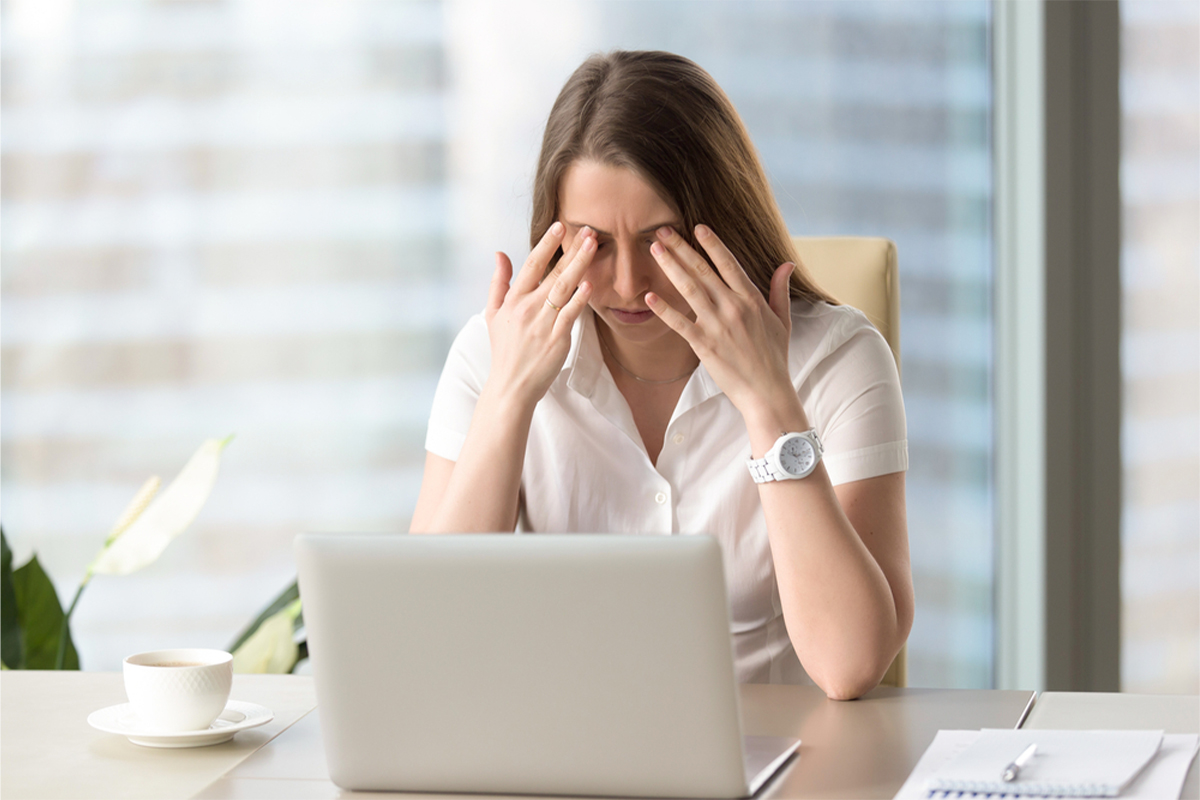In our digital age, eye fatigue—also known as eye strain or asthenopia—has become a common complaint. Whether you’re working on a computer, scrolling through your phone, or binge-watching a favorite show, your eyes are under constant stress. If you’ve experienced tired, burning, or watery eyes, you’re not alone.
Let’s explore the causes, signs, and—most importantly—simple, effective remedies to reduce and prevent eye fatigue.
What Causes Eye Fatigue?
Eye fatigue happens when your eyes are overused for extended periods, especially for close-up tasks that require focus. Common triggers include:
1. Screen Time
- Staring at computers, tablets, or phones without breaks
2. Poor Lighting
- Working in overly bright or dim environments
3. Improper Viewing Distances
- Sitting too close or too far from screens
4. Dry Eyes
- Not blinking enough during screen use causes moisture loss
5. Uncorrected Vision Problems
- Wearing the wrong prescription or needing glasses
Common Symptoms of Eye Fatigue
- Tired, sore, or burning eyes
- Blurred or double vision
- Dry or watery eyes
- Headaches
- Difficulty concentrating
- Sensitivity to light
- Neck, shoulder, or back pain (from poor posture during screen use)
Remedies and Solutions for Eye Fatigue
Thankfully, eye fatigue is manageable. Here are proven ways to relieve and prevent tired eyes:
1. Follow the 20-20-20 Rule
Every 20 minutes, look at something 20 feet away for at least 20 seconds.
This helps reset your focus and reduces muscle strain.
2. Adjust Screen Settings
- Brightness: Match screen brightness to your surroundings.
- Text Size & Contrast: Use larger fonts and high contrast to reduce strain.
- Blue Light Filters: Use night mode or blue light filter apps (many phones and computers have this built-in).
3. Blink More Often
Staring at screens reduces your blink rate. Make a conscious effort to blink to keep your eyes moist and reduce dryness.
4. Use Artificial Tears
Over-the-counter lubricating eye drops can relieve dryness. Choose preservative-free options for regular use.
5. Improve Lighting
Avoid glare by:
- Using anti-glare screens
- Positioning lights to the side, not behind or directly in front of screens
- Using soft, ambient lighting instead of harsh fluorescents
6. Check Your Glasses or Contacts
Ensure your prescription is up to date. If you use digital devices a lot, ask your optometrist about blue-light blocking lenses or computer glasses.
7. Take Breaks and Stretch
Step away from the screen every hour. Stretch your body, rotate your neck, and rest your eyes. A few minutes away can restore comfort and focus.
8. Warm Compress for Tired Eyes
A warm washcloth placed over closed eyelids can:
- Relieve tension
- Stimulate tear production
- Relax eye muscles
9. Hydrate and Sleep Well
Dehydration and lack of sleep can worsen eye strain. Aim for 7–8 hours of sleep and drink plenty of water daily.
When to See a Doctor
Occasional eye fatigue is normal, but if you:
- Experience persistent discomfort
- Have vision changes
- Get frequent headaches
- Or suspect you need corrective lenses
…it’s time to consult an eye care professional. They can rule out underlying issues and recommend tailored solutions.

Eye fatigue may be a modern-day nuisance, but it doesn’t have to interfere with your productivity or quality of life. By adopting healthy screen habits, taking regular breaks, and giving your eyes the care they deserve, you can beat the strain and keep your vision clear and comfortable.

